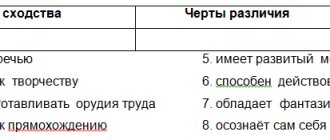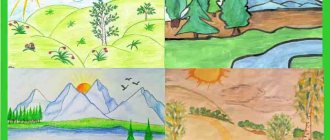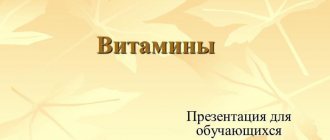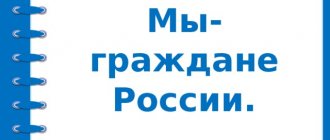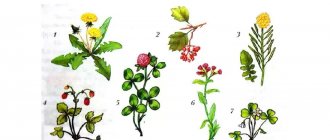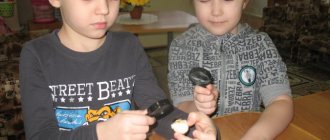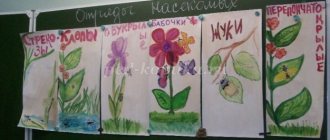Homework assignments
Write it down in your dictionary: primitive people.
Primitive people are people who lived during the period of human history before writing was invented.
In the local history museum, visit the section dedicated to the life of primitive people. Look at the finds of archaeologists and talk about them in class.
A story about the life of primitive people for grade 4
In the local history museum we looked at an exhibition that tells about the life of the primitive society of our region.
Archaeologists excavated ancient sites, and from the objects found, they formed an idea of the primitive way of life.
Primitive society lived in small camps and roamed a lot.
They have already learned to use fire, process stone, wood and bones.
Primitive man hunted various animals - deer, bears, mammoths.
For hunting they used sticks with pointed ends and clubs.
They hunted together and often set traps.
Also, people of that time were engaged in collecting berries, mushrooms, and roots.
They lived in caves, where they constantly kept a fire going.
In the museum we saw the simplest devices and tools made by man of that time - hewn stones, fragments, stone axes.
The life of ancient people was difficult and dangerous.
They had to fight for their survival.
They tanned the skins of killed animals and painted scenes of hunting and everyday life on the walls of the caves.
History - lessons, tests, presentations, notes
Create your teacher website PC and PPC courses Video lessons Olympiad Webinars for teachers
- home
- Story
Watch and download free lessons, tests, notes, presentations and other useful materials on history for teachers and students.
- All 13406
- Lessons 6096
- Presentations 2979
- Tests 757
- Planning 960
- Events 1003
- Other 1611
- All classes
- For preschoolers
- 1 class
- 2nd grade
- 3rd grade
- 4th grade
- 5th grade
- 6th grade
- 7th grade
- 8th grade
- 9th grade
- Grade 10
- Grade 11
| Extracurricular event “Culture and traditions of the Terek Cossacks” to introduce students to the traditions and culture of the Terek Cossacks... 08/26/2020 Oveshnikov Sergey Viktorovich 31 0 |
| Summary of an open history lesson in the 8th grade on the topic “The Age of Peter I” Consolidate the student’s knowledge on the era of Peter I; use the subjective experience of students; develop the individual abilities of students; create conditions for... 10/07/2020 Ragimova Gulmira Gadzhitagirovna 12 0 |
| Master class on the topic: Visual aids in history lessons. Visual aids in history lessons are relevant and require careful study, due to the fact that the modern school sets the following goals and objectives for the history teacher... 06/30/2020 Serpokrylov Vyacheslav Aleksandrovich 63 0 |
| Extracurricular activity - Historical quiz game "Tolmach" Extracurricular activity - Historical quiz game "Tolmach" Date: December 1, 2020 03/08/2020 Mirzoev Farid Gairbekovich 91 0 |
| Europe and the world: from traditional society to industrial Additional materials for the history lesson of Russia and Europe... 05/27/2020 Kononova Larisa Vladimirovna 69 0 |
| Research work: “Partisan detachments on the Don” Goals: Preserve the memory of the heroes and events of the Great Patriotic War. • Involve the younger generation in work on... 05/19/2020 Koroy Anna Ivanovna 83 0 |
| Pedagogy of patriotism during the Great Patriotic War ffffffffffffffffffffffffffffffffffffffffffffffffffffffff... 05/12/2020 Polovinko Denis Ruslanovich 88 0 |
| Integrated lesson history + computer science in 8th grade Integrated (history + computer science) lesson in 8th grade Date: December 20, 2018 03/08/2020 Mirzoev Farid Gairbekovich 78 1 |
Presentation “Children-heroes of the Great Patriotic War” The presentation will tell about the pioneer heroes of the Second World War... 08/25/2020 Svetlana Vyacheslavovna Buslovskaya 51 2 |
| Aspect analysis of a lesson on the topic Ancient Egypt, grade 5 - to repeat and systematize students’ knowledge about natural conditions and economic development, about the management features and cultural development of ancient Egypt; 10/07/2020 Ragimova Gulmira Gadzhitagirovna 11 0 |
| Open lesson in Memory "Feat of Stalingrad" Development of an open lesson dedicated to the "Feat of Stalingrad", which talks about its scale, role in the radical turning point during the Great Patriotic War, about the heroes whose feat... 03.24.2020 Kudrina Ekaterina Aleksandrovna 80 0 |
| The sacred source “Pentateuch (Torah)” The Holy Scripture of Judaism (Sfarim) is also known in Hebrew abbreviation as Tanakh ... 07/23/2020 Adkhamov Muzaffar Makhmudzhanovich 39 0 |
| History of the Wusuns and their economy Lesson topic: History of the Wusuns and their economy. Presentation for a lesson on the history of Kazakhstan.... 05.24.2020 Kalauidenova Almagul Sabirovna 65 0 |
| Constitution of kunіne arnalgan makala Constitution of kunіne arnalgan makala. Ata zanymyz turaly malimetter berylgen… 08/27/2020 Asylgul Sagatzhanovna Kusmanova 35 0 |
| cordial. News ենալով բազմաթիվ posed by cordial 05.23.2020 Hovsepyan Suzanna Ashotovna 90 0 |
| Repetitive and generalizing lesson on the topic: “The world at the beginning of modern times” 7th grade This development offers a test consisting of two parts…. 05/28/2020 Malakhova Tatyana Petrovna 99 3 |
| Topic: “Nature and people of Ancient India.” India is located in South Asia. Its shores are washed by the Indian Ocean from the west, east and south. Find Mesopotamia on the map and determine in which direction (north, south) you need to move from Mesopotamia, ... 09.10.2020 Ibragimova Sakinat Alievna 31 0 |
| “The Babylonian king Hammurabi and his laws” The presentation was compiled for an open lesson on the history of the Ancient World. It contains 26 slides, fully complies with the requirements of the Federal State Educational Standard, tests knowledge on the map, chronology of events, historical ter... 08/11/2020 Dyadyuk Lyudmila Egorovna 75 0 |
| Presentation “Europe in the Early Middle Ages” presentation “Europe in the Early Middle Ages” introduces students to this topic in a visual form... 09.28.2020 Bolotova Olga Vasilievna 96 11 |
| “Web services in the work of a teacher” Education goes beyond the walls of the classroom, students can listen to lectures by the best teachers and famous scientists, and study remotely. The system for assessing student achievements is also changing. The rating is beyond... 03/17/2020 Sabitova Rimma Yadekarovna 86 0 |
- ← Back
- Continue →
Presentation “Activities of primitive people” for 4th grade
The pictures depicted the main activities of ancient people: hunting, gathering, making tools and hunting tools, dressing skins, relaxing by the fire, painting pictures in caves.
Ready presentation “Activities of primitive people”
Next lesson
1) Remember what you know about the pyramids of Ancient Egypt.
The pyramids of Ancient Egypt are huge structures that were built over decades on the orders of the pharaohs.
Many pyramids have survived to this day, but many more have been destroyed.
The pyramids hide many secrets and their purpose is still controversial among scientists.
History lesson plan in 4th grade
"Moscow Kremlin. Kremlin towers"
(based on the textbook by E.V. Saplin, A. Saplin “Introduction to History”)
Form (non-standard): lesson - virtual tour
Lesson type: consolidation lesson
Lesson objectives:
1. educational: repetition, consolidation and deepening of knowledge about the history of the Moscow Kremlin; its architectural monuments
2. developmental: development of cognitive activity and creative abilities of children; developing the ability to work cooperatively and harmoniously with classmates; improve mental operations: analysis, synthesis, generalization, comparison; develop mental processes: memory, thinking, imagination, perception, attention, emotions; development of aesthetic understanding and artistic taste of students;
3. educational: instilling in students an interest in studying the history of their country through acquaintance with architectural sights; fostering a sense of patriotism and pride in one’s homeland; careful, reverent attitude towards historical heritage; nurturing in children the desire and need to bring good to people.
Equipment: TCO: multimedia projector, disk with computer presentation; map of the Moscow Kremlin, handouts for pair work;
During the classes
I. Organizational moment
Today I am not just a teacher, but also a tour guide. And I want to invite you on an excursion to the Moscow and Kazan Kremlin. This will be a virtual trip. It won’t be real, but we will go there and get to know a lot of people.
II. Updating of reference knowledge
Before heading to the modern Kremlin, I suggest you remember the history of the Moscow Kremlin. Support cards with words will help you with this, which, if added correctly, will line up in the stages of the emergence of the Moscow Kremlin. You will do this work in pairs. I remind you that you need to work in pairs amicably and quickly. When you finish the task, let me know by raising your hands. I give you 1 minute for this work. Open the small envelopes. Proceed with the task.
Results of pair work.
The correctness of the task is checked. After each explanation of the historical stage of the emergence of the Kremlin, there is a demonstration of a computer presentation of each stage with a view of the wooden, then the white stone, and then the brick Kremlin with portraits of their founders with the additions of the teacher.
Ivan Danilovich Kalita was a smart and cunning man. He even managed to come to an agreement with the Golden Horde. And the Horde did not bother Muscovites with wars for 40 years. During his reign, the lands around Moscow expanded. At the end of his life, Ivan Kalita ordered the construction of new fortress walls to replace the old ones “in a single oak,” which means from durable oak.
A few years later, Dmitry Ivanovich Donskoy became the Prince of Moscow. He replaced the oak walls with white stone ones. Moscow strengthened its position in Rus', became “the mother of all cities,” which means it was necessary to provide such a city with strong defense. Dmitry Donskoy played the greatest role in the history of Russia - he liberated Rus' from the Golden Horde yoke, uniting all the princes with their troops against the Tatar-Mongols.
When everyone recognized Moscow as the capital, Ivan III was already the Moscow prince. He began to call himself “the sovereign of all Rus'.” On the Moskva River he ordered the construction of a powerful fortress made of red brick. To do this, he invited Italian masters to Moscow. This fortress was never taken by storm. It still stands - this is the current Kremlin. Welcome!
III. Learning new material
Working with a visual aid - a map of the Kremlin.
— Why do you think the Kremlin was built?
Once upon a time there was a simple settlement on the territory of the Kremlin, but much later only very rich and noble people could afford to live in the Kremlin. What follows is the teacher's story about the sights of Cathedral Square, the Tsar Bell, and the Tsar Cannon.
The main square of the Kremlin is Sobornaya. The main Kremlin churches face here with their facades.
In the center of the Kremlin, the architect Aristotle Fioravanti erected the most famous and revered cathedral - the five-domed Assumption Cathedral. It was painted by Russian artists Dionysius and Timofey and the icon painter Horse.
Ten years later, Pskov masters Krivtsov and Myshkin built the Annunciation Cathedral, crowned with nine golden domes; this cathedral served as the home church of the Russian tsars.
The third great Kremlin Cathedral is the Arkhangelsk Cathedral. It is unusual in appearance and more reminiscent of a Venetian palace. It was built by Aleviz Novy. This cathedral became the tomb of the Moscow princes. Five-domed, with a main golden and four small copper domes, the cathedral in its entirety and style was very similar to the Assumption.
In front of us is the Ivan the Great bell tower. For several centuries it remained the tallest building in Moscow (82 meters). Travelers going to the capital saw her many kilometers from the city. The bells of “Ivan the Great” rang on the most important holidays; their ringing could be heard on the remote outskirts of Moscow.
At the foot of Ivan the Great now stands the work of masters father and son Motorin, a worthy Tsar Bell, cast in 1735, weighing 8 thousand poods or 200 tons.
Nearby is the Tsar Cannon, a monument to the foundry art of the 16th century, cast in 1586 by the Russian master A. Chokhov. The barrel weighed 40 tons, length 5.34 m, caliber 890 mm, and was intended for the defense of the Kremlin.
— Look carefully at the map of the Moscow Kremlin. What geometric figure does the Kremlin remind you of?
— Maybe some of you know how long the Kremlin walls are? (The teacher tells the children about the Kremlin walls)
The Italians, experienced builders, erected a first-class fortress in Moscow for those times. Its walls, from 8 to 19 meters high and 3 to 6 meters thick, stretched for more than 2235 m. A wide battle platform ran along the upper edge of the wall, covered on the outside with a thousand teeth, their shape resembled a dovetail.
— Who knows how many towers the Moscow Kremlin has? (20)
Towers stand around the Kremlin, like mighty heroes who came from epics from fairy tales. Twenty stone heroes in high, pointed helmets.
- Why were they built?
Each of the towers was erected at a different time, they are all different in appearance and size. Each of them had its own functions and role. There are travel towers, watchtowers, and archers.
— What names of the Moscow Kremlin towers do you know?
And each Kremlin tower has an interesting story associated with it. For example, Taynitskaya. Why do you think it got this name? A secret well and a passage to the Moscow River were dug under it.
Vodovzvodnaya. - Why does it have such a name?
It once housed a water-lifting machine that pumped water from the tower well to the royal palace.
Kutafya. It got its name from the word “kut” - shelter, corner. Bridgehead fortification of the Kremlin. Its height is 13.5 meters.
Spasskaya. It was named after the icon of the Savior, which was once located above the gates of the tower. This is the most important tower of the Kremlin, but not the tallest, its height is 71 meters.
Trinity. There was a prison in the deep basements of the tower.
Alarm. A signal bell hung on this tower.
In 1937, 5 Kremlin towers were crowned with ruby stars: Spasskaya, Nikolskaya, Vodovzvodnaya, Troitskaya, Borovitskaya.
The stars are equipped with powerful incandescent lamps and powerful cooling systems for the lamps, otherwise they would crack from the high temperature. The distance between the two ends of the beams is from 3 to 3.5 meters. Despite their significant mass (about 1.5 tons), stars rotate relatively easily when the wind direction changes. Due to their shape, they are always installed with the frontal side facing the wind. The strength and rigidity of the structure is designed to withstand the maximum pressure of hurricane winds.
IV. Consolidation of the studied material. Brainstorm.
We have repeated and learned a lot. Let's play a game. Illustrations of Kremlin monuments will appear on the screen. In 2 seconds you will need to recognize and name them.
Illustrations appear. Stars, walls, Ivan the Great Bell Tower, Spasskaya Tower, Tsar Bell, Tsar Cannon, Vodovzvodnaya Tower, Alarm Tower, Tainitskaya Tower.
We continue our journey.
— Guys, what clock in Russia counts down the last minutes of the outgoing year and starts the new year? (Kremlin chimes) - On which Kremlin tower are they installed? (on the Spasskaya Tower)
The Kremlin chimes are installed on the Spasskaya Tower. In 1621, the English master H. Golovey made a clock, for which a stone top was built on the tower in 1625. In 1706, a new clock was installed, bought by Peter I in Holland. Modern Kremlin chimes were made in Moscow. The clock mechanism of the chimes occupies three floors of the tower. It weighs 20 tons. The chimes have 4 dials, one on each side of the tower. The diameter of the dial is 6.12 m, the height of the Roman numerals on the clock is 0.72 m, the length of the hour hand is 2.97 m, the minute hand is 3.27 m.
Teacher. Each principality had its own Kremlin. There is such a handsome Kremlin here in Tatarstan.
For the pride of the capital of Tatarstan, the pearl of world culture, a thousand years have not passed without a trace: in the stone of its buildings there are traces of all eras, the works of many generations of architects. A lot of interesting things are hidden behind the white stone walls of the Kremlin.
Let's take a moment to look into our Kremlin.
Spasskaya (passage) tower (XVI century). The main time meter for the residents of Tatarstan - an electronic clock - appeared on the tower relatively recently - in 1963.
Kul Sharif Mosque. Museum of Islamic Culture of the Volga Region. Only twice a year, on the great holidays of Ramadan and Korban Bayram, the Kul Sharif mosque is open for public prayers. Tower Syuyumbike. Architectural symbol of Kazan. The tower was apparently laid in great haste: the depth of its foundation is only 1.4 meters, which was the reason for its tilt.
Annunciation Cathedral. Founded on October 4, 1552, on the day of Tsar Ivan IV’s entry into Kazan.
V. Lesson summary
For five centuries now, a beautiful fortress with high walls, multi-domed temples, elegant pointed towers, and rich chambers has stood in the very center of Moscow. The Kremlin is an amazing monument of history and culture, captivating with its beauty and preserving the memory of the distant past. Our excursion is over.
